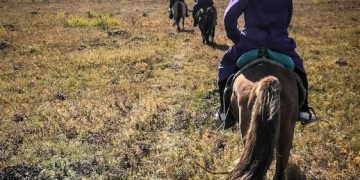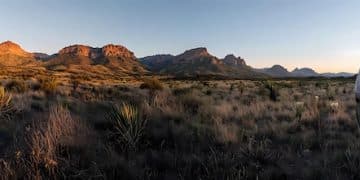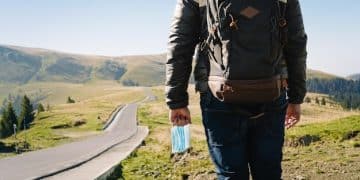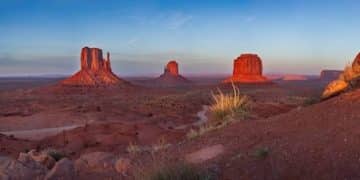Responsible Wildlife Photography: Capture Stunning Images Ethically in the US
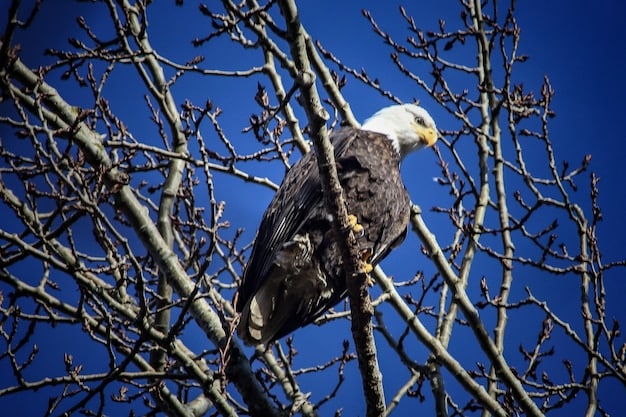
Responsible wildlife photography in the US involves capturing stunning images while prioritizing animal welfare and minimizing disturbance to their natural habitats through ethical practices and respectful techniques.
Are you passionate about wildlife photography and eager to capture the beauty of American fauna? Responsible wildlife photography: How to capture stunning images without harming animals in the US requires more than just a good camera; it demands ethical considerations and a deep respect for the animals and their environment.
Understanding Ethical Wildlife Photography
Ethical wildlife photography starts with a clear understanding of the impact photographers can have on animals and their ecosystems. It’s about prioritizing the well-being of the subject over the perfect shot.
By adopting responsible practices, you can ensure that your photography contributes positively to wildlife conservation and education.
Minimizing Disturbance
One of the core principles of ethical wildlife photography is minimizing disturbance to animals. This means keeping a safe distance, avoiding loud noises, and refraining from any actions that could stress or frighten them.
Respecting their space ensures their natural behaviors are not disrupted.
- Avoid approaching nests or dens, especially during breeding seasons.
- Turn off flash photography, which can disorient or scare animals.
- Be mindful of your presence and avoid blocking animal pathways.
Understanding animal behavior is crucial. Look for signs of stress, such as changes in posture, vocalizations, or movement patterns, and respond accordingly by increasing your distance or leaving the area.
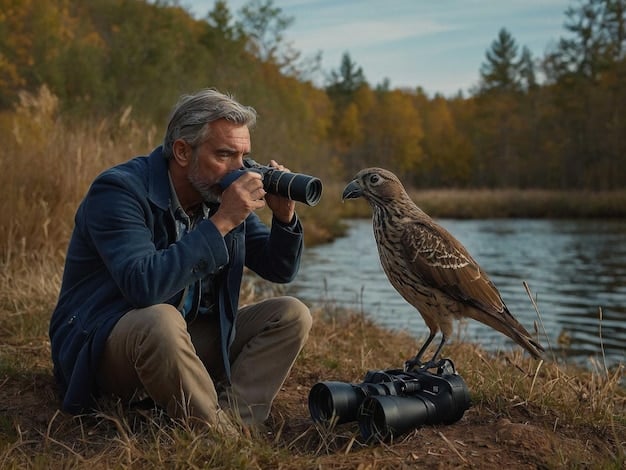
Prioritizing safety and ethics ensures that wildlife photography remains a respectful and sustainable practice, fostering a greater appreciation for the natural world.
Best Practices for Approaching Wildlife
Approaching wildlife requires careful planning and execution. The goal is to observe and photograph animals in their natural habitats without causing undue stress or altering their behavior.
Using the right techniques and equipment will help you maintain a respectful distance while still capturing stunning images.
Using Telephoto Lenses
Telephoto lenses are essential tools for responsible wildlife photographers. They allow you to capture detailed images from a safe distance, minimizing disturbance to your subject.
Investing in a high-quality telephoto lens can significantly improve your ability to photograph wildlife ethically.
Camouflage and Concealment
Blending into the environment can help you get closer to wildlife without alarming them. Camouflage clothing, blinds, and natural cover can all be effective strategies for concealment.
Patience and quiet observation are key to successful wildlife photography.
- Choose clothing that matches the surrounding environment.
- Use natural cover, such as trees and bushes, to conceal yourself.
- Set up a blind to observe wildlife without being detected.
Remember that your presence should be as unobtrusive as possible. Avoid sudden movements or loud noises that could startle the animals.
Ethical wildlife photography is about patience, respect, and a deep appreciation for the animals you are photographing.
Understanding Wildlife Laws and Regulations in the US
Each state implements different laws and regulations regarding wildlife protection. Understanding these laws is crucial for ethical wildlife photography.
Ignorance of these laws is not an excuse; it is your responsibility as a photographer to be informed.
Federal Laws and Regulations
Several federal laws protect wildlife in the United States. The Endangered Species Act, for example, prohibits harming or harassing endangered species.
The Migratory Bird Treaty Act protects migratory birds and their nests, making it illegal to disturb them without a permit.
- Familiarize yourself with the Endangered Species Act.
- Understand the Migratory Bird Treaty Act and its implications.
- Check local regulations and advisories before heading out.
Penalties for violating these laws can include fines, confiscation of equipment, and even jail time.
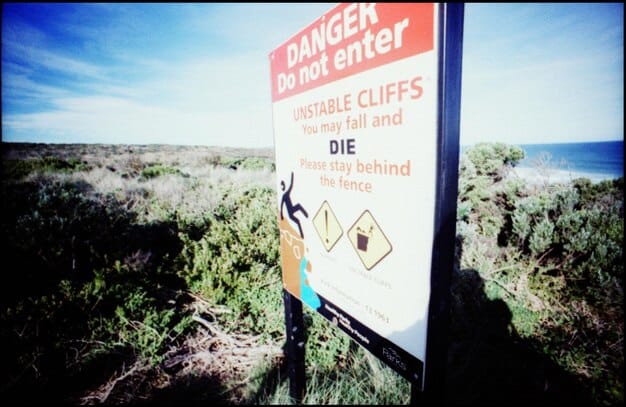
Staying informed and compliant with these laws is an essential aspect of responsible wildlife photography.
Adhering to wildlife laws demonstrates respect for the animals and commitment to their conservation.
The Impact of Social Media on Wildlife Photography Ethics
Social media has transformed wildlife photography, making it easier to share images with a global audience. However, it has also raised new ethical concerns.
The pursuit of likes and followers can sometimes lead photographers to prioritize sensationalism over animal welfare.
Avoiding Location Tagging
Sharing precise location information can inadvertently lead to increased disturbance or even harm to wildlife. Poachers and irresponsible tourists may use this information to locate and exploit vulnerable animals.
Protecting the privacy of wildlife habitats is a crucial responsibility for ethical photographers.
Promoting Responsible Tourism
Wildlife photography can be a powerful tool for promoting responsible tourism. By showcasing the beauty of nature and the importance of conservation, you can inspire others to protect these natural wonders.
Use your platform to educate and advocate for ethical wildlife practices.
- Share information about conservation efforts and organizations.
- Promote eco-friendly tourism practices.
- Encourage respect for wildlife and their habitats.
Remember that your images can have a lasting impact. Use your influence to promote ethical and sustainable practices.
Social media provides a platform for raising awareness, encouraging respect, and fostering a community of responsible wildlife enthusiasts.
Essential Gear for Ethical Wildlife Photography
Having the right equipment is essential for capturing stunning wildlife images while minimizing your impact on the environment.
Investing in high-quality gear is an investment in ethical photography.
Camera Bodies and Lenses
A good camera body with high ISO performance and fast autofocus is crucial for capturing wildlife in various lighting conditions. Telephoto lenses, as mentioned earlier, are indispensable for maintaining a safe distance.
Consider investing in weather-sealed equipment to protect it from the elements.
Tripods and Support Systems
A sturdy tripod is essential for sharp images, especially when using long telephoto lenses. Gimbal heads and other support systems can help you stabilize your camera and track moving subjects.
Choose a lightweight and portable tripod for easy transport.
- Select a tripod that can support the weight of your camera and lens.
- Use a gimbal head for smooth panning and tilting movements.
- Consider a monopod for added stability in tight spaces.
Having the right gear allows you to capture high-quality images while remaining respectful of the wildlife and their habitat.
Essential gear includes more than just cameras and lenses; it also includes items that ensure your comfort and safety in the field.
Promoting Conservation Through Photography
Wildlife photography can be a powerful tool for promoting conservation and raising awareness about environmental issues. By capturing compelling images, you can inspire others to take action to protect our planet’s biodiversity.
Your photographs can tell stories that resonate with people and ignite their passion for conservation.
Documenting Endangered Species
Photographing endangered species can help raise awareness about their plight and the need for conservation efforts. These images can be used in educational materials, campaigns, and advocacy efforts.
Share your images and stories to inspire others to support conservation initiatives.
Supporting Conservation Organizations
Partner with conservation organizations and donate your images for their use in fundraising and outreach efforts. You can also volunteer your time and skills to help them achieve their mission.
Collaborating with conservation groups amplifies your impact and reaches a wider audience.
- Offer your images for use in their publications and websites.
- Participate in their events and campaigns.
- Donate a portion of your print sales to support their work.
By actively promoting conservation through your photography, you can make a tangible difference in the world.
Every photograph you take is an opportunity to advocate for the protection of wildlife and their habitats.
| Key Aspect | Brief Description |
|---|---|
| 🐾 Respect Wildlife | Minimize disturbance; prioritize animal well-being over getting the perfect shot. |
| 📸 Gear Matters | Use telephoto lenses and camouflage to capture images from a distance. |
| 📜 Know the Laws | Understand and comply with federal and local wildlife protection laws. |
| 🌐 Share Responsibly | Avoid precise location tagging on social media to protect wildlife habitats. |
Frequently Asked Questions (FAQ)
▼
Ethical wildlife photography prioritizes the well-being of animals above all else, avoiding any action that could cause them stress or harm. It respects their natural behaviors and habitats.
▼
Avoiding location tagging protects vulnerable species from poachers and irresponsible tourists who might exploit them. It helps maintain the privacy of their natural habitats.
▼
Telephoto lenses allow you to capture detailed images from a safe distance, minimizing disturbance. Sturdy tripods and camouflage clothing are also essential for responsible practices.
▼
Check official websites of federal and state wildlife agencies, and consult local park authorities for area-specific rules. Staying informed is crucial for compliance and ethical conduct.
▼
You can partner with conservation organizations, donate your images, and share educational content. Your work can inspire others to protect biodiversity and support environmental causes.
Conclusion
Responsible wildlife photography: How to capture stunning images without harming animals in the US is not just a set of guidelines, but a mindset. By embracing ethical practices, you can capture incredible images while contributing to the conservation of America’s diverse wildlife, ensuring that future generations can appreciate their beauty in a sustainable way.
